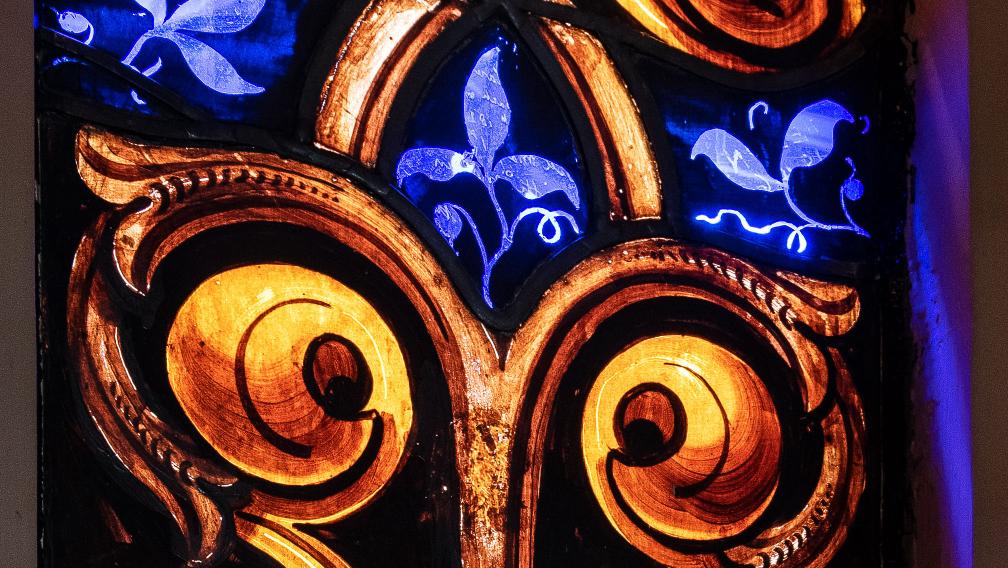The hand of the Lord came upon me, and he brought me out by the spirit of the Lord and set me down in the middle of a valley; it was full of bones. He led me all around them; there were very many lying in the valley, and they were very dry. He said to me, “Mortal, can these bones live?” I answered, “O Lord God, you know.” Then he said to me, “Prophesy to these bones, and say to them: O dry bones, hear the word of the Lord. Thus says the Lord God to these bones: I will cause breath to enter you, and you shall live. I will lay sinews on you, and will cause flesh to come upon you, and cover you with skin, and put breath in you, and you shall live; and you shall know that I am the Lord.”
So, I prophesied as I had been commanded; and as I prophesied, suddenly there was a noise, a rattling, and the bones came together, bone to its bone. I looked, and there were sinews on them, and flesh had come upon them, and skin had covered them; but there was no breath in them. Then he said to me, “Prophesy to the breath, prophesy, mortal, and say to the breath: Thus says the Lord God: Come from the four winds, O breath, and breathe upon these slain, that they may live.” I prophesied as he commanded me, and the breath came into them, and they lived, and stood on their feet, a vast multitude.
Ezekiel 37:1–14
The prophet Ezekiel is in a valley of despair. He looks around and sees only remnants of death — dry human bones scattered far and wide. The image is haunting, and Ezekiel must have felt a sense of foreboding. He must have wondered, “Why would God bring me to such a harrowing place — a valley devoid of life, devoid of hope?” Perhaps Ezekiel wonders this out loud, posing his question to God.
But God has a question of God’s own: “Can these bones live?” Ezekiel hedges. “Lord, you know,” he says, and he waits to see what God will do. He has seen the wonders of God moving in strange and powerful ways, and he can tell that, instead of something “bone-shattering,” God is up to something life-giving. God tells Ezekiel to prophesy to the bones, and then God breathes — elevating those long dead humans back to life. Like the primordial breath in Genesis, the ruach of God infuses the bones and reconfigures them.
As it turns out, I have been thinking about life and death this week, as my beloved 94-year-old grandmother passed away, after living a beautiful life of service and faith. In her last days, her bones were indeed brittle and her breath was giving way. Surrounded by love, our family read one of her favorite Bible passages, Psalm 23. As in the Psalm, even though she was in the “Valley of the Shadow of Death,” we were able to affirm that she shall “dwell in the house of the Lord forever.”
As Christians, we affirm that death has no sting — for God is a God of life eternal. We can trust that all things, even time itself, are in God’s hands. Such an affirmation should fill us with hope in whatever valley we are facing. When we are asked in this coming Easter season, “Can these bones live?” we can answer with a resounding “Yes!”
—Summerlee Staten
THEOLOGY
The Bible Project gives a compelling visual overview of the mysterious book of Ezekiel.
POETRY
Paul Hoover re-envisions the Valley of the Dry Bones.
VISUAL ART
The prophet Ezekiel was an important figure for the Jewish community in Dura-Europos in the first two centuries of the Common Era. The synagogue at Dura, in present-day Syria, contained three murals c. 239.
DANCE
This week’s Gospel reminds us of the story of Lazarus. The Alvin Ailey dance company interprets his story.
MUSIC
The Morgan State University Choir sings “Ezekiel Saw The Wheel.”
Get the Five Ways In Your Inbox
Sign up to receive reflections and updates from the Faith Formation & Education team.
Coming Soon
This Sunday at 10am, the Rev. Michael Bird joins Summerlee Staten and the Discovery community to talk about spiritual unity.
Starting next Sunday, walk with us from Palm Sunday to Easter Day in a variety of in-person and online Holy Week services.
